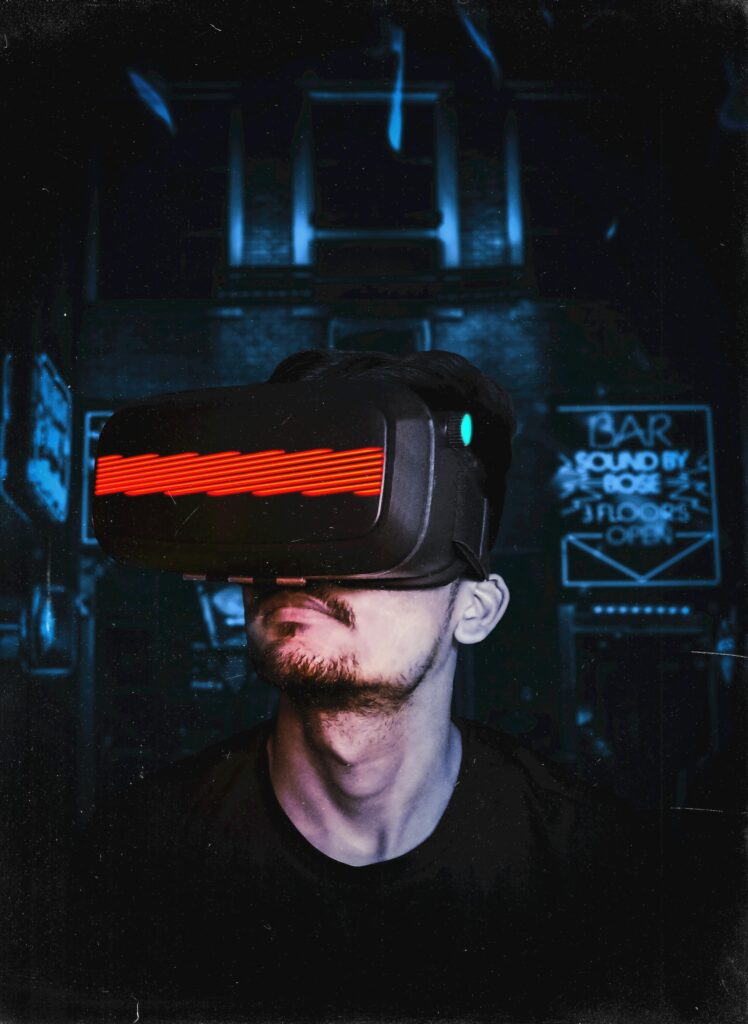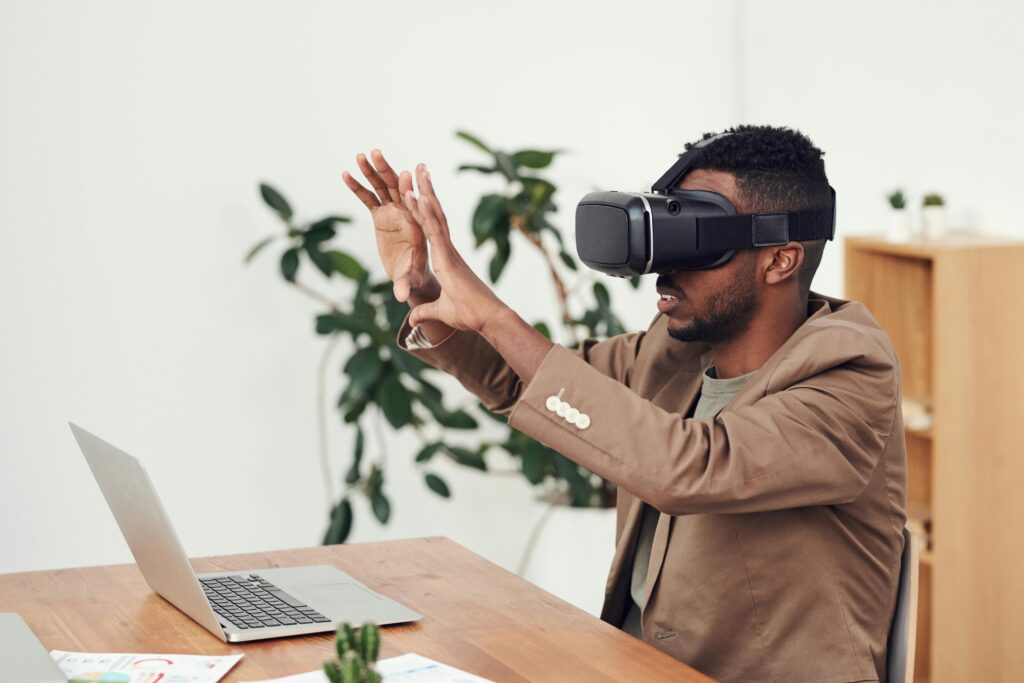Exploring the Future: The World of Augmented Reality
Augmented Reality (AR) is revolutionizing the way we perceive and interact with the world around us. By superimposing digital information onto our physical environment, AR creates immersive experiences that enhance our understanding, productivity, and entertainment. This technology, once the realm of science fiction, is now an integral part of various industries, from gaming and education to healthcare and retail. In this article, we will explore the fundamentals of AR, its current applications, and the potential future developments that could shape our lives.
Understanding Augmented Reality
At its core, Augmented Reality combines the real world with computer-generated elements, creating a composite view that augments the user’s perception of reality. Unlike Virtual Reality (VR), which immerses users in a completely digital environment, AR overlays digital information on the real world, allowing users to interact with both simultaneously. This is typically achieved through devices like smartphones, tablets, and AR glasses, which use cameras and sensors to map the physical environment and integrate digital content seamlessly.
The Evolution of AR Technology

The concept of AR has been around for decades, but significant advancements in technology have only recently made it accessible to the general public. Early experiments with AR can be traced back to the 1960s when computer scientist Ivan Sutherland developed the first head-mounted display system, known as the “Sword of Damocles.” However, it wasn’t until the advent of powerful mobile devices and sophisticated software algorithms that AR became practical and widespread.
In the early 2000s, AR began to gain traction with the development of marker-based systems, which used visual markers to trigger digital overlays. The introduction of smartphones with advanced cameras and sensors further accelerated AR’s growth, culminating in the release of ARKit by Apple and ARCore by Google in the late 2010s. These platforms provided developers with the tools to create robust AR experiences, paving the way for mainstream adoption.
Current Applications of Augmented Reality
Gaming and Entertainment

One of the most popular and well-known applications of AR is in the gaming industry. Games like Pokémon GO and Ingress have captivated millions of users worldwide by blending digital creatures and elements with real-world environments. AR enhances the gaming experience by making it more interactive and engaging, encouraging players to explore their surroundings.
Education and Training
AR is transforming education by providing interactive and immersive learning experiences. Educational apps and platforms use AR to bring textbooks to life, enabling students to visualize complex concepts in 3D. For instance, medical students can use AR to explore human anatomy in detail, while history students can experience historical events through augmented reenactments.
Healthcare
In the healthcare sector, AR is proving to be a valuable tool for diagnosis, treatment, and training. Surgeons can use AR to overlay critical information, such as blood vessels and organs, onto a patient’s body during procedures, improving accuracy and reducing risks. Additionally, AR-based training simulations allow medical professionals to practice and refine their skills in a safe and controlled environment.
Retail and E-commerce
Retailers are leveraging AR to enhance the shopping experience and engage customers in new ways. AR apps allow users to visualize products in their homes before making a purchase, reducing the uncertainty associated with online shopping. For example, furniture retailers offer apps that enable customers to see how a piece of furniture would look in their living room, while cosmetic brands provide virtual try-on features for makeup products.
The Future of Augmented Reality

The potential of AR is vast, and ongoing advancements in technology promise to unlock even more possibilities. Here are some key areas where AR is expected to make significant strides in the future:
Wearable AR Devices
While AR experiences are currently accessible through smartphones and tablets, the future lies in wearable devices like AR glasses and contact lenses. These devices will offer a more seamless and hands-free experience, making AR a part of everyday life. Companies like Microsoft, Google, and Apple are already investing heavily in developing next-generation AR wearables.
Enhanced Interactivity and Collaboration
Future AR applications will focus on enhancing interactivity and collaboration. For instance, AR could enable remote teams to work together in a shared virtual space, manipulating 3D models and visualizing data in real time. This would revolutionize fields such as architecture, engineering, and design, where collaboration and visualization are crucial.
Integration with Artificial Intelligence
Combining AR with Artificial Intelligence (AI) will lead to more intelligent and context-aware applications. AI-powered AR systems could recognize objects, understand user preferences, and provide personalized recommendations. In healthcare, AI-driven AR could assist doctors in diagnosing conditions by analyzing medical images and providing real-time insights.
Expanding into New Industries
As AR technology continues to evolve, it will find applications in new industries and use cases. For example, AR could enhance tourism by providing interactive guides and historical information at landmarks. In manufacturing, AR can assist workers by overlaying assembly instructions and safety information onto machinery, improving efficiency and reducing errors.
Challenges and Considerations
Despite its potential, AR also faces several challenges that need to be addressed for widespread adoption. These include:
- Technical Limitations: Developing robust and reliable AR applications requires advanced hardware and software capabilities. Ensuring seamless integration between the physical and digital worlds remains a technical challenge.
- Privacy and Security: AR applications often require access to cameras and sensors, raising concerns about privacy and data security. Safeguarding user data and ensuring transparency in data usage are critical.
- User Experience: Creating intuitive and user-friendly AR experiences is essential for mass adoption. Designers and developers must focus on usability and accessibility to ensure that AR applications are engaging and easy to use.
- Cost and Accessibility: High-quality AR devices and applications can be expensive, limiting their accessibility to a broader audience. Reducing costs and making AR technology more affordable will be key to its widespread adoption.
Conclusion
Augmented Reality is poised to transform the way we interact with the world, offering new possibilities for entertainment, education, healthcare, and beyond. As technology continues to advance, AR will become more integrated into our daily lives, creating a future where the digital and physical realms seamlessly coexist. By addressing the challenges and focusing on user experience, privacy, and accessibility, we can unlock the full potential of AR and create a more connected and immersive world.
